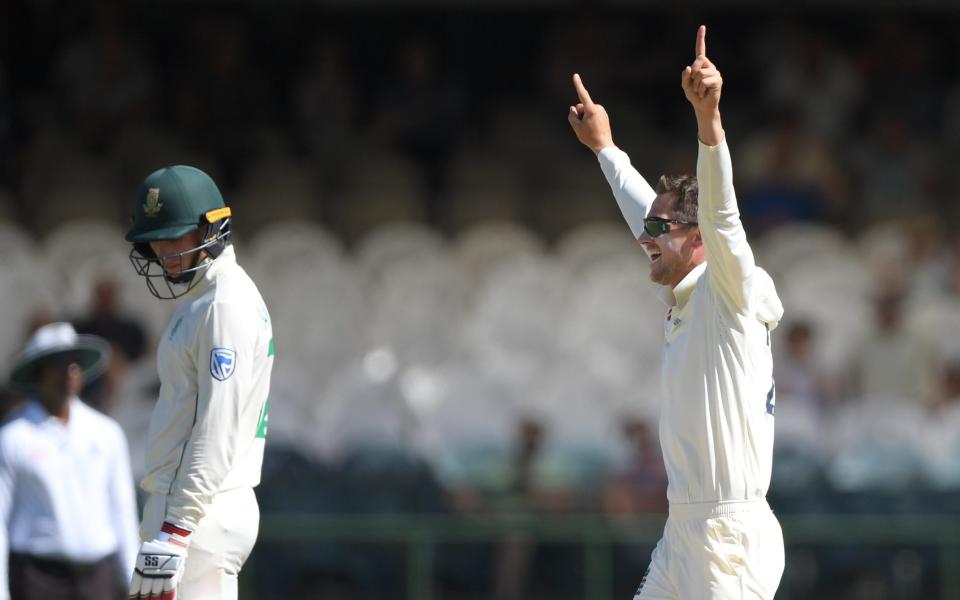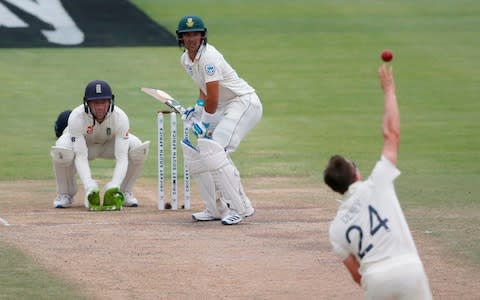Joe Denly's wickets highlight versatility blindspot: batsmen who bowl are just as valuable as tailenders who make runs

“It's well-documented that we're not expecting the lower order to provide a major source of runs in a Test match,” said Graham Gooch, England’s tour manager in Australia in 1998. Gooch, naturally, was spectacularly vindicated.
A year later, England fielded Alan Mullally, Phil Tufnell and Ed Giddins at nine-10-11 in a Test in 1999: a joke not so much with one punchline as three. While England long undervalued tail-end runs, other countries - Australia, New Zealand and South Africa - were quicker in focusing on extracting extra value from their lower order.
The heightened focus on tail-end batting has been a manifestation of cricket’s age of hyper-professionalism, and the desire to extract every iota of value out of each player. Yet the logical corollary - extracting every iota of bowling value out of batsmen - has been comparatively ignored. If this partly reflects the fundamental imbalance in cricket - the worst batsmen in the team still has to bat, while the worst bowlers do not need to bowl - it still points to a way for teams to gain an edge.
When JP Duminy made his Test debut for South Africa in 2008, he had taken 19 wickets with his off-spin in 48 first-class matches in his entire career. Naturally, then, Duminy was picked by South Africa exclusively as a batsman, and didn’t bowl a ball in his first two Tests. But Duminy continually paid heed to honing his spin. He took 42 wickets in 46 Tests at a very respectable 38.1 apiece - giving a useful change option, providing insurance if South Africa misread a pitch and bowling more in Asia. Duminy was never exactly an all-rounder, but nor would he have played as many Tests - or been as useful to a team he helped to world No1 - without his bowling.
On Duminy’s home ground in Cape Town, Joe Denly offered a glimpse of the bowling value that top-order batsmen can provide. Like Duminy, Denly has been selected overwhelmingly for his batting. But, like Duminy, Denly’s bowling - in the right conditions and to the right batsmen - could be of use to his side and increase his worth as a player. Denly’s two top-order wickets in the fourth innings were crucial in England clinching victory with 50 balls remaining.

“It’s nice to be able to chip in here and there with a few overs and pick up wickets like I have done in this second innings,” Denly said. “I like to consider myself more than a part-timer. I feel I have something to offer in both the red-ball and white-ball games. Certainly, on day-five pitches like this when there is a lot of rough outside the off-stump to the left-handers I can play a part. It’s nice to do that when the opportunity comes.”
If there was an element of fortune about both the wickets - Dean Elgar believed he had been wrongly given out caught behind while Quinton de Kock pulled a long hop to short midwicket - they could not downgrade the fact that Denly had bowled very well. During his 18 overs, he induced a false shot with 18.9% of his deliveries - more than one an over, and comfortably the best of any of England’s attack. CricViz’s metrics rated Denly the most threatening of any England bowler.
Of course, it will seldom be this way; indeed, Denly had not taken a wicket in his previous 11 Tests. But with England currently lacking a viable frontline leg-spinner - Adil Rashid is still not fit to bowl in Test cricket, while Matt Parkinson simply appears unready - Denly allows England to create favourable match-ups and target players weak against leg-spin. This was the strategy against De Kock, who now averages 18.8 against leg-spin but 40.0 against all other types of bowlers. In England’s next Test series, in Sri Lanka, Kusal Mendis and Dhananjaya de Silva are two top-order players notably weak against leg-spin. Joe Root would rather have a better leg-spinner than Denly to throw at them - but he would rather have Denly than no one at all.
Indeed, if England can be confident about the bowling of Denly’s leg-spin and Root’s off-spin, it will provide them with crucial extra flexibility in Sri Lanka. The spectacular 3-0 whitewash at the end of 2018 was built on the excellence of Jack Leach, Adil Rashid and Moeen Ali, who formed part of a six-man attack. With only one of those - Leach - likely to tour this time, England could select only two specialist spinners alongside Denly and Root. That, in turn, could allow England to select only a five-man attack, including Ben Stokes, and pick an extra batsman.
Gooch’s comments about runs from bowlers have not aged well: in 2018, runs from the lower order were the difference between England losing 3-2 to India and winning 4-1. Now, given their dearth of specialist spinners, England hope that wickets from their top order batsmen may have a similarly advantageous effect.

